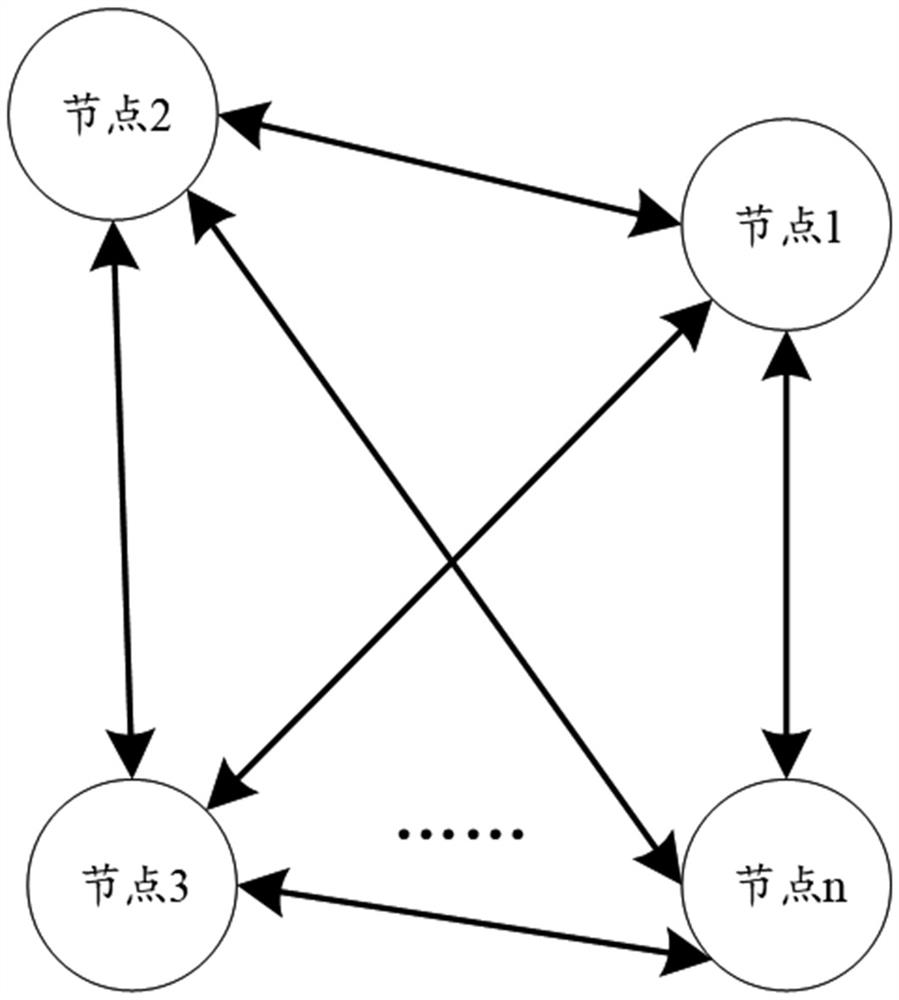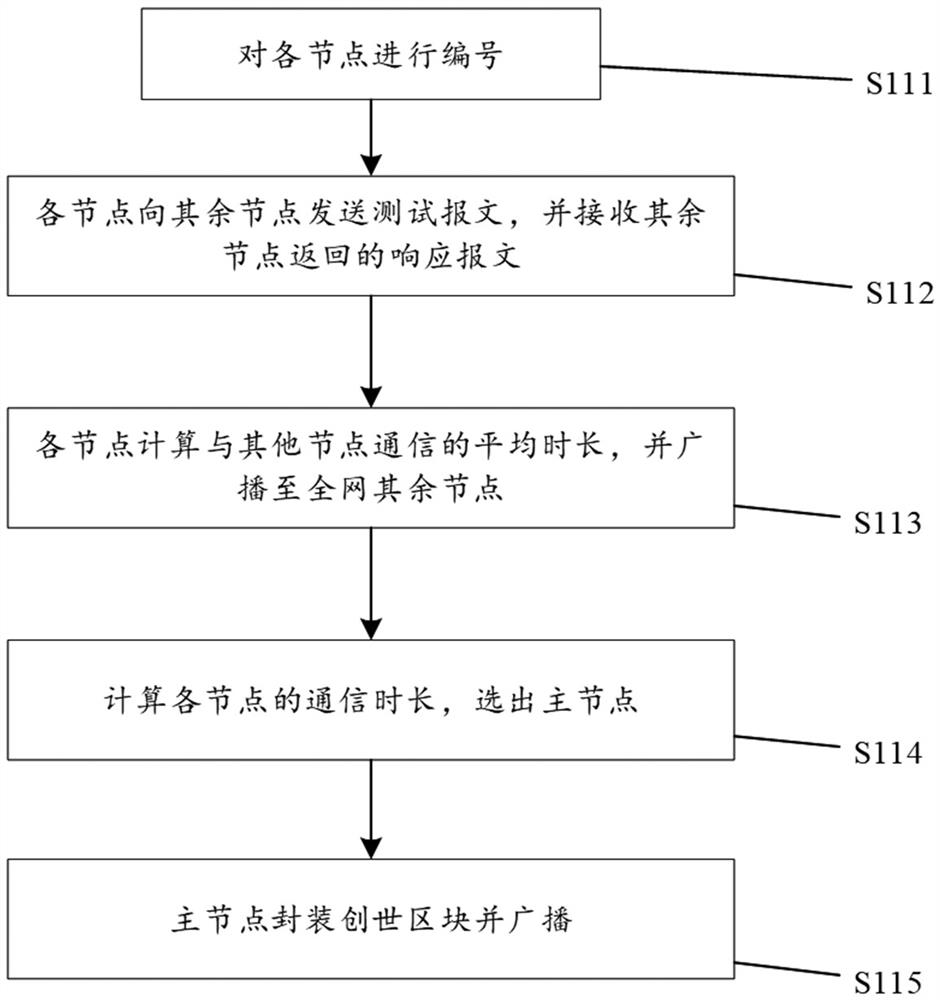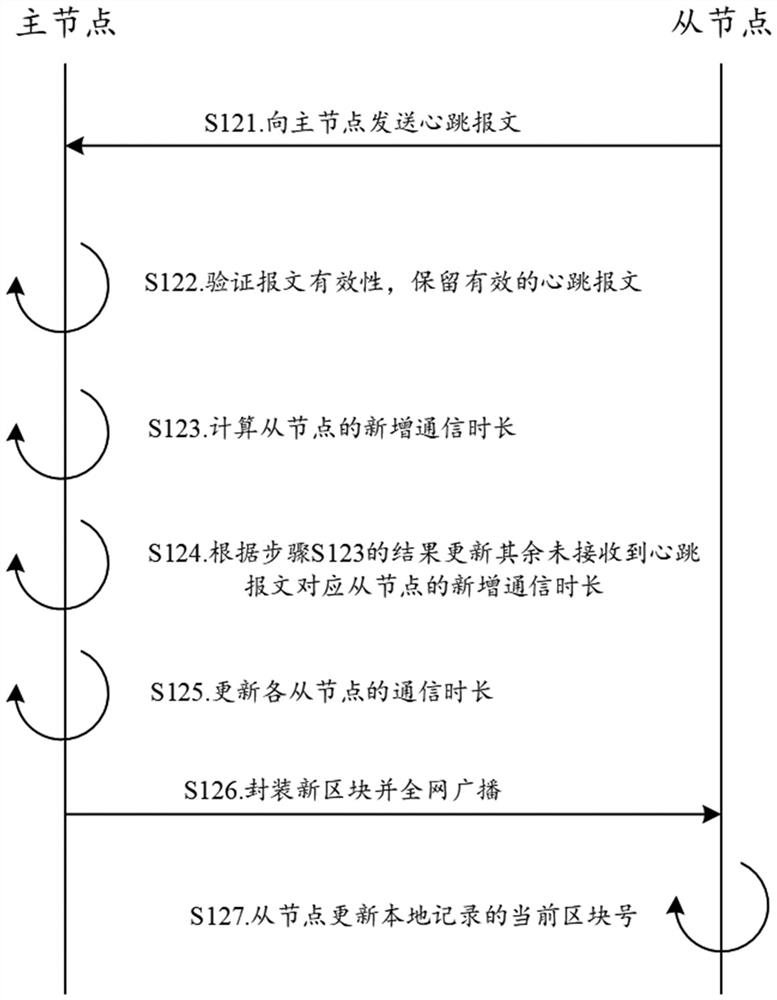A method and system for fault monitoring of Internet of Things equipment based on block chain
A technology for IoT equipment and fault monitoring, applied in the transmission system, electrical components, etc., can solve the problems of increasing the burden of network communication, failure to select a new master node, complicated and lengthy node election process, etc., to reduce the number of requests sent, Facilitate review analysis and improve communication utilization
- Summary
- Abstract
- Description
- Claims
- Application Information
AI Technical Summary
Problems solved by technology
Method used
Image
Examples
Embodiment 1
[0052] figure 1 It is a schematic diagram of the Internet of Things architecture disclosed in this embodiment. It should be noted that, figure 1 Only the Internet of Things architecture diagram disclosed in some embodiments of the present invention, others are in figure 1 The schematic diagrams obtained by optimizing or deforming on the basis all belong to the protection scope of the present invention.
[0053] figure 1The Internet of Things architecture shown includes multiple nodes, n nodes are shown in the figure, these nodes can be interconnected through the network, the nodes can be represented as servers, intermediate devices, terminal devices, etc., each node can be its own network The rest of the nodes within the coverage area provide IoT data sending and receiving services.
[0054] refer to figure 2 , there are n nodes set in the Internet of Things architecture of this embodiment, and each node is initialized according to the following steps S111-S115:
[0055]...
Embodiment 2
[0090] On the basis of Embodiment 1, this embodiment provides another block chain-based IoT device fault monitoring method. If there is business interaction between the slave node and the master node within the message receiving cycle of the master node, the heartbeat will be reported to the master node. Document information and business information are sent together as business messages, and no additional heartbeat messages are sent, which reduces the amount of non-business type requests sent and improves communication utilization.
[0091] Receive cycle at master node When a slave node has a service message that needs to be sent to the master node, the communication process between the master node and the slave node also includes the following:
[0092] S211. The slave node sends a service packet to the master node.
[0093] S212. The master node verifies the validity of the service message, and updates the current service number of the slave node corresponding to the serv...
Embodiment 3
[0100] On the basis of Embodiment 1 and Embodiment 2, this embodiment uses one master node A and four slave nodes B, C, D, E to specifically illustrate the blockchain-based IoT device fault monitoring method of the present invention.
[0101] In the initialization phase of the network, five nodes A, B, C, D, and E conduct the primary node election, and the initialization is the same as steps S111-S115 in Embodiment 1, which will not be repeated here. In this embodiment, election node A is set as the master node, and B, C, D, and E are slave nodes.
[0102] refer to Image 6 , Image 6 It shows the message communication process between node A and nodes B, C, D, and E in a certain receiving cycle, which is executed as follows:
[0103] S301. Nodes B, C, D, and E send heartbeat messages to node A; within time T since node A receives the first heartbeat message, node A successfully receives the heartbeat messages of nodes B, C, and D.
[0104] S302. Node A verifies the validity...
PUM
 Login to View More
Login to View More Abstract
Description
Claims
Application Information
 Login to View More
Login to View More - R&D
- Intellectual Property
- Life Sciences
- Materials
- Tech Scout
- Unparalleled Data Quality
- Higher Quality Content
- 60% Fewer Hallucinations
Browse by: Latest US Patents, China's latest patents, Technical Efficacy Thesaurus, Application Domain, Technology Topic, Popular Technical Reports.
© 2025 PatSnap. All rights reserved.Legal|Privacy policy|Modern Slavery Act Transparency Statement|Sitemap|About US| Contact US: help@patsnap.com



